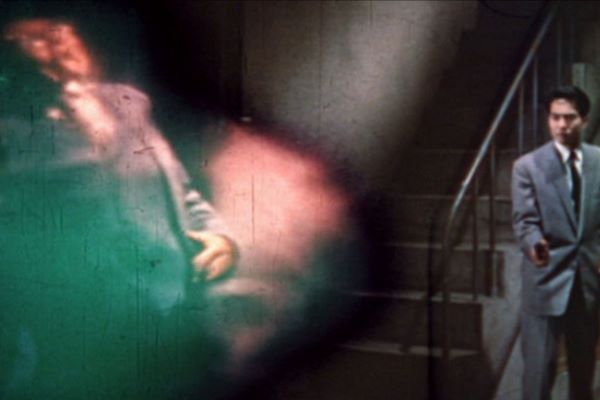It is sometimes difficult to review sci-fi of a particular period on its own merits. Very little dates as quickly as a vision of the future, and big ideas can be dissolved in irony by low production values. This double feature by the prolific Ishirô Honda, forever known for the original Godzilla, suffers somewhat in this respect. Both are rich in thematic subtext, but are blunted, or – even worse – made charming by time, distance, and the effects of the period. Entertaining? For sure, but not necessarily in the way that Honda may have intended.
The H-Man is an early body horror squirming beneath the skin of a noir gangster drama. Brilliantly titled Beauty and the Liquid People in Japan, Honda once again evokes the twin spectres of Hiroshima and Nagasaki. After a hydrogen bomb test in the pacific, a radioactive slime invades Tokyo. The substance can take human form and dissolve anyone with whom it comes into contact.
The effect of radiation on the human body was by now fully apparent, and the aim is to replicate the absolute dissolution of the tissue under massive doses. Somewhat less distressing than instant obliteration, the ‘H-Man’ works in a way reminiscent to The Blob, or the ‘Dip’ in Who Framed Roger Rabbit? This all takes place amidst the disappearance of a gangster during a drug deal. The girlfriend of the gangster (Yumi Shirakawa) becomes the focus of both the police and the missing hoodlum’s associates. Of course, he has been a victim of the slime and the sci-fi and noir strands converge in an ill-advised flamer-thrower chase through the Tokyo sewers.
Gory for the time, The H-Man works better before it resorts to those tricks, operating neatly as a sci-fi of ideas. Through empty clothes and abandoned weapons, Honda suggests what has taken place. Once the slime is seen in action, it is all unfortunately less convincing. Reversed shots of seeping goo creeping up the leg of a victim works fine. A static frame bubbling to suggest a melting body, less so. However, the seedy milieu Honda establishes is grimier and grittier than much of the genre at the time. And while devoid of memorable characters, there are enough mad ideas to keep it involving. You doubt that Honda ever thought that part of its appeal would be the shonkiness of its effects but they definitely add an extra layer of enjoyment.
Battle in Outer Space benefits from an obviously larger budget and better special effects, but lacks the eccentric – okay, charm – of The H-Man. Set in the admirably optimistic year of 1965, Earth is attacked by aliens from the planet Natal. The invaders create a serious of disasters by stopping the movement of atoms within various structures. With the cessation of kinetic energy, the objects become weightless (how solid the physics of this are is debatable). An international crew are sent to the moon to take out the alien base and save the Earth.
While obviously full of recognisable tropes – it’s essentially a spin on The War of the Worlds – there are a few indicators that Battle in Outer Space may have been sneakily influential. In terms of story and a theme of self-sacrifice there are hints of Independence Day and Armageddon. The deep voices of the aliens as they take over the minds of various luckless humans is uncannily like that of the Mysterons in Gerry and Sylvia Anderson‘s Captain Scarlet. It’s also entirely feasible that the lovely miniature work by Eiji Tsuburaya may have influenced the beloved puppetry pioneers too, especially in Terrahawks.
While lots of fun Battle in Outer Space is oddly paced and the designs of the aliens, their craft and their moon base fall rather unfortunately into the category of ‘adorable’. Of creatures you would wish to bump into on a lunar surface, they’re probably around the threat level of Clangers. As such, at no point does the action reach the stirring levels that the insistently martial score aims for. However, the film is possessed of a markedly more optimistic tone than The H-Man; a hymn to the spirit of international cooperation that was unusual in a nation marked for centuries by its insularity, and still smarting from a war ended by nothing less than two atrocities.
Coming between Rodan and Mothra, this double feature sees the expansion of Honda’s familiar themes in other directions away from his Daikaiju movies. The H-Man is a genuine curiosity and a clear attempt to comment on the increasing permissiveness of Japan after the war. In tone, it’s not unlike a Japanese version of something like Nigel Kneale‘s Quatermass stories. Battle in Outer Space is beautifully crafted if ultimately incredibly quaint and far more generic. Connoisseurs of vintage sci-fi will find much to enjoy, even if they are far less memorable than the massive atomic monsters that made his reputation.
Available on Blu-ray from Mon 16 Nov 2020
